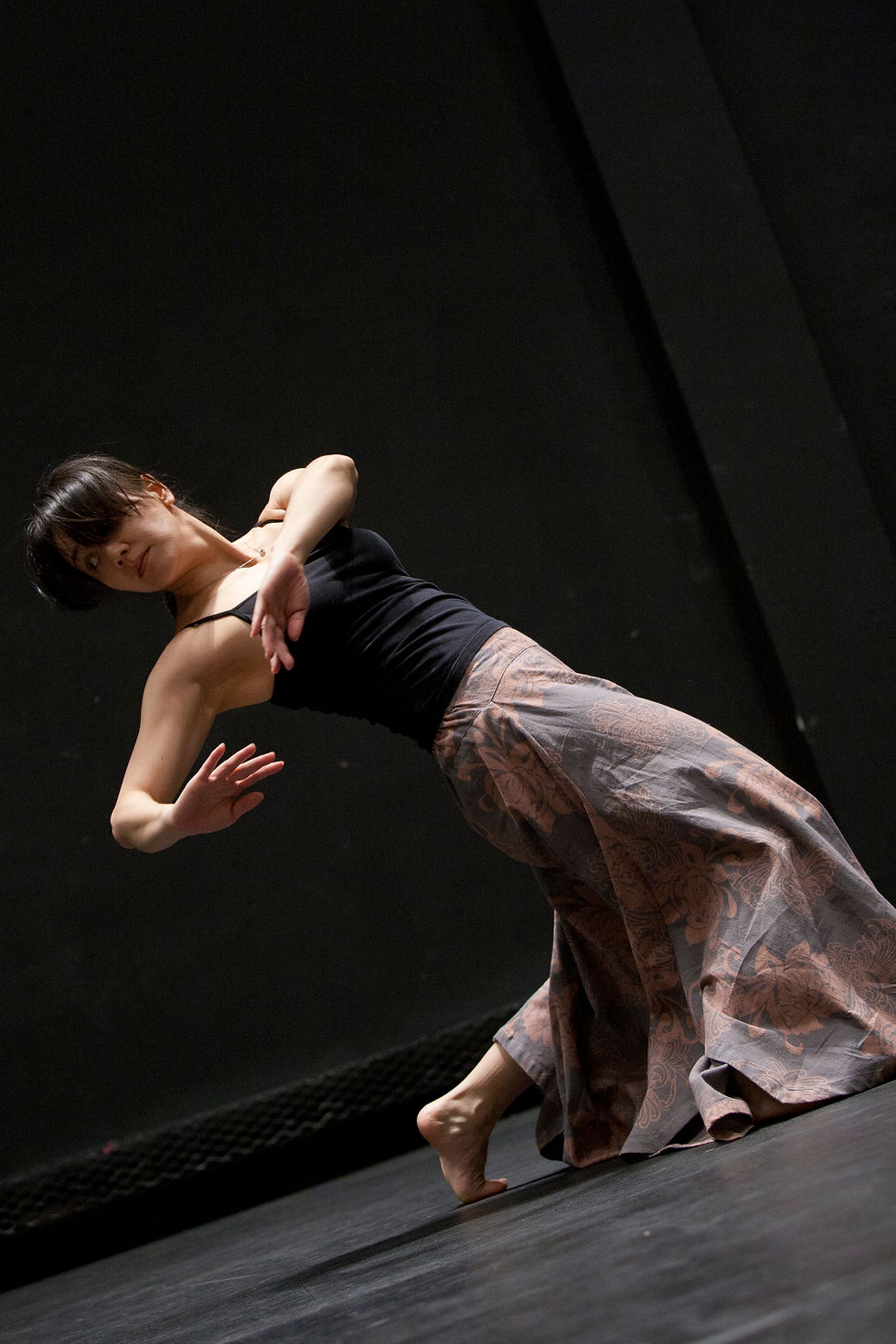









Noru Ka Soru Ka
Noru Ka Soru Ka now and in the last years is Georg Hofmann's main ocupation
on stage. Noru Ka Soru Ka is an improvising collective of Japanese dancers Makoto Matsushima and Mao Arata, Mike Nord (g/electronics) from New York and Georg Hofmann on drums and percussion.
Noru Ka Soru Ka means "bend or break" refering to our taking risks on stage in creating each performance, or "take the leap" refering to opening up to another artform, another culture, another point of view, another kind of food, another way of
life etc.
Noru Ka Soru Ka started in 2006 and developed step by step over the years to it's actual level - a true work in progress. In the best moments the level of interplay in Noru Ka Soru Ka has come to a point, where the music becomes the dance and the dance the music so to speak. Makoto Matsushima and Mao Arata collaborate 20 years in famous Pappa Tarahumara. Mike Nord and Georg Hofmann work together since 30 years first playing Jazz and over the years liberating themselves in several groups and interarts projects towards (free) improvisation.
Noru Ka Soru Ka performed in Japan, the Pacific Northwest of the USA, Switzerland and Hong Kong and produced the two DVDs "eeasy! Live at la Fourmi" and "6 Etudes" and the CD "Music of Noru Ka Soru Ka". Performances are scheduled for 2015.
To the right you find a complete documentation in .pdf, the trailer to Noru Ka Soru Ka's DVD "...eeeaasy!.... Live at La Fourmi" from 2012 and an excerpt from Noru Ka Soru Ka's performance at XXX Gallery in Hong Kong 2013.




Nord, Hofmann & Stahel
Nord, Hofmann & Stahel’s music is improvised. Sometimes minimal, all sound, it is orgiastic, draws from old folkloric traditions or seems to be a soundtrack for an inner film. It always is delicate, sensitive, illustrative and inviting. Inviting the listener to come along on the journey.
Founded end of 2014 to celebrate Mike Nord and Georg Hofmann's 30 years of musical collaboration, their invitation of flutist/vocalist Andreas Stahel to form a trio turned out to be a clever move. It led to a first little tour in Oregon/USA. The live and studio recordings documenting the trios work of 2014 were published on the CD "Tree, Wind & Flowers" on Leo Records in late 2015.
Almost to the day a year after the first gig, the trio played at Konservatorium Winterthur, Switzerland in front of an enthusiastic audience and turned into an even closer knit unit.
Inviting Andreas was no coincidence. Georg Hofmann played with him in several occasions and different settings mostly with dancers and Mike Nord played wirth him and dancers Mao Arata, Andrea Boll and Hideto Heshiki at Tanzhaus Zürich. The experience was completed, when Andreas Stahel joined Noru Ka Soru Ka as a guest artist at Winterthur's Theater am Gleis. It was quite clear, that this combo will work out great,
press
Our ‘harmony’ and ‘melody’ are as much, and often more, about sonic qualities than about pitches and chords.” So beschreibt MIKE NORD, Professor of Music, Music Technology, Improvisation & Jazz Studies an der Willamette University in Salem, Oregon, und elektro- gitarristischer Partner des Zürcher Drummers GEORG HOFMANN zutreffend das Hauptkennzeichen ihrer Klangkunst. Seit 30 Jahren bilden die beiden eine Raumstation, an der dann der Geiger Richard Carr, der Pianist Art Maddox, die Videokünstlerin Ann Kresge oder die Tänzer Mao Arata und Makoto Matsushima andocken konnten. Nun auf Tree, Wind & Flowers (LR 747) gibt ANDREAS STAHEL, ein ‘Klang-Atmer’ aus Winterthur, ihren Trips einen fernöstlichen Touch durch pfeifenden Obertongesang. Mehr noch aber spottet er der Erdenschwere durch den Klangfächer seiner Flöten, wobei er da auch Tieftöner in Bass- und Kontrabasslagen pustet. Mit einem seelenbrüderlichen Anflug von Franziska Baumanns “Voices & Tides”-Schwingungen. Nord verbreitet lediglich bei ‘Talk to your teens’ gitarristischen Teen-Spirit, ansonsten mischt er sich ein als eine feine, oft mysteriöse Präsenz, die die Soundscapes durch- schimmert und durchweht als ein anderer, ein elektronischer Wind. Hofmann wirkt daneben garadezu handfest, wenn er die Becken aufrauschen lässt, die Bleche drischt, seine metalloiden Striche und Tupfer setzt. Er mit schamanistischen Gesten und Stahel mit Stein- und Knochengeflöte einerseits, zugleich aber auch einer Density 21.5- und Amplification-Futuristik, schließen wie Zeitreisende Archaisches mit Sonic Fiction kurz. ‘Marylin ascending’ erklingt zuletzt als eine dunkle Orgel-Flöten-Elegie, die sich aus metalloidem Klingklang herausschält.
Rigobert Dittmann in Bad Alchemy


